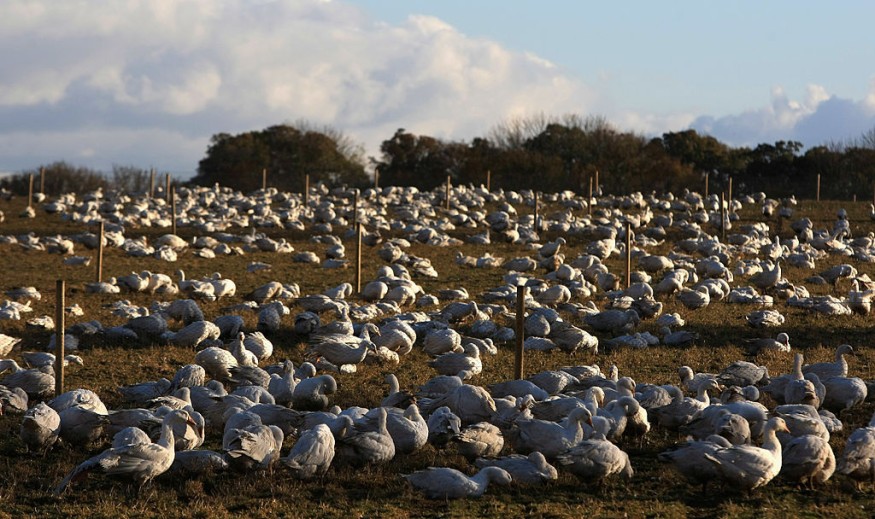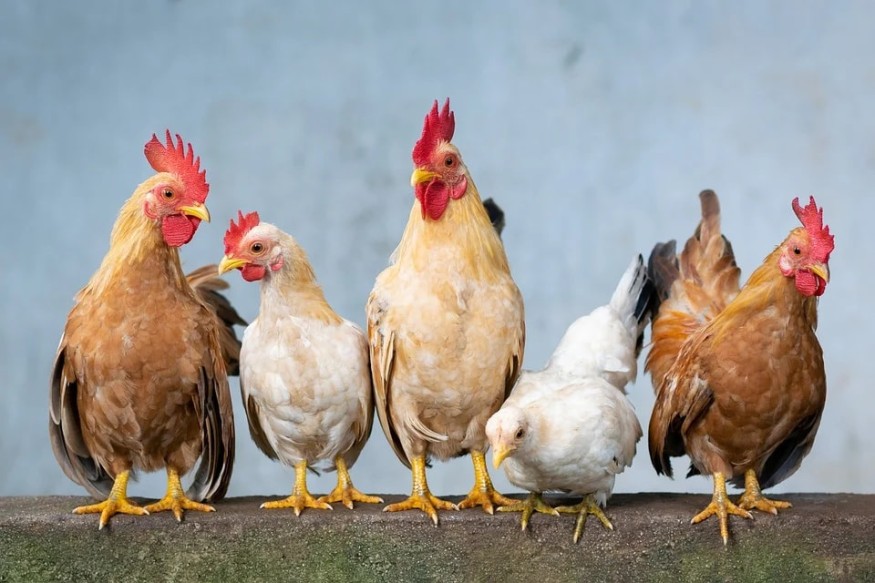In recent weeks, a highly contagious and deadly strain of bird influenza has been sweeping across the eastern half of the United States.
This virus is killing both wild birds and farmed poultry and raising fears that an unchecked outbreak could be disastrous for an industry that was devastated seven years ago by a similar virus.

Spreading Virus
The virus has been found in migrating birds from Florida to Maine, infected home hens in Virginia and New York, and afflicted thousands of turkeys in Kentucky and Indiana since it began killing chickens in northeast Canada in early January, prompting huge cullings and import bans.
According to federal officials, the virus, a so-called highly pathogenic bird flu, was discovered in a Delaware commercial chicken farm on the Delmarva Peninsula on Wednesday. The Delmarva Peninsula is home to one of the country's greatest concentrations of poultry farms.
Migratory Birds
Experts believe the virus is being spread by wild birds returning from winter feeding regions, most likely by contaminated droppings. Many others feel the worst is yet to come, with the peak springtime migration still weeks away.
"Given how quickly this thing is speeding," Henry Niman, a scientist in Pittsburgh who studies virus genetic evolution and has been watching the outbreak's spread across the country, said. "I believe we could see infection levels similar to those seen in the past."
Federal officials have urged poultry farmers to report sick or deceased birds and enhance biosecurity procedures on their farms, including preventing contact between wild birds and domestic animals.
Related Article : Record Breaking Bird Flu Outbreak Hits the UK
Not a Food Safety Risk

In an email, Mike Stepien, a spokesman for the Department of Agriculture's Animal and Plant Health Inspection Service, said, "It's important to stress that avian fllu is not regarded to be a concern to public health and it's not a food-safety risk."
Despite the low risk to humans, scientists are keenly monitoring the virus, known as Eurasian H5N1, closely related to an Asian variant that has sickened hundreds of people since 2003, largely those who worked with infected poultry. According to the Centers for Disease Control and Prevention, that virus does not spread easily among humans, but it is exceedingly lethal, with a 60 percent death rate.
Although the strain now circulating in the United States has not been transmitted to humans, virologists and epidemiologists believe the rising number of bird infections is concerning because it increases the risk that the virus will change in ways that make it more infectious to humans.
Dr. Gail Hansen, a public health veterinarian and former Kansas state epidemiologist, pointed out that influenza viruses have traditionally been the cause of human pandemics. According to some medical historians, the deadly 1918 influenza pandemic was caused by Army recruits in Kansas who contracted the disease from farm animals and then disseminated it to military camps in Europe.
Asia, the Middle East, and Europe have all been hit by the virus. Three hundred incidents have been reported in 29 European nations in recent weeks. Due to an epidemic at a nature reserve, thousands of cranes were killed in Israel.
Worrying Farmers
Turkey farmers, particularly in Indiana and Kentucky, were concerned. Several farms in those states have been shut down in the last two weeks after regulators identified the virus in birds who spend their entire lives crammed into enormous sheds. Farmers have been astounded by how quickly the virus kills livestock, with animals dying hours after being infected.
State officials in Indiana acted quickly, euthanizing more than 100,000 birds and erecting a six-mile containment zone surrounding afflicted farms, where exports are banned, and birds are tested daily.
Previous Catastrophe

Because of the catastrophe of 2014 and 2015, everyone is on high alert and trying to be as prepared as possible, said Dr. Denise Heard, a veterinarian with the U.S. Department of Agriculture. The Poultry and Egg Association is a non-profit organization that promotes the production of poultry and eggs
The epidemic of 2014-15 is often regarded as the most damaging in the country's history. It sent poultry and egg prices skyrocketing and cost the industry more than $3 billion, but farmers were compensated for lost flocks. Nearly 50 million birds were killed or destroyed due to the infection, with the vast majority of them in Iowa and Minnesota.
For more health and medicine related news, don't forget to follow Nature World News!
© 2025 NatureWorldNews.com All rights reserved. Do not reproduce without permission.





